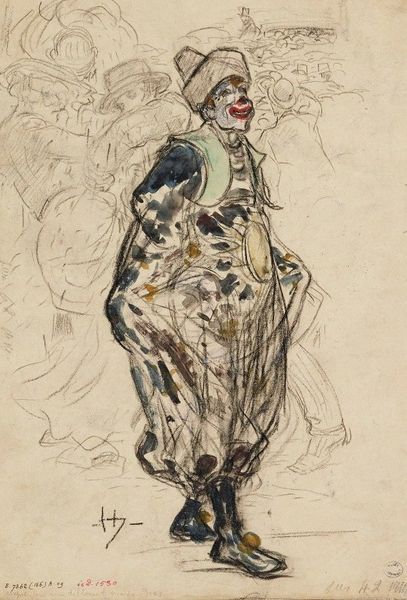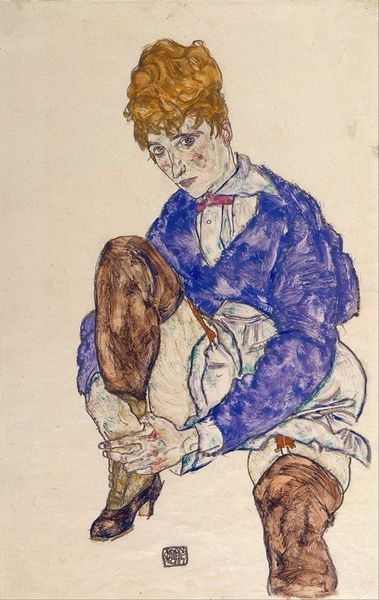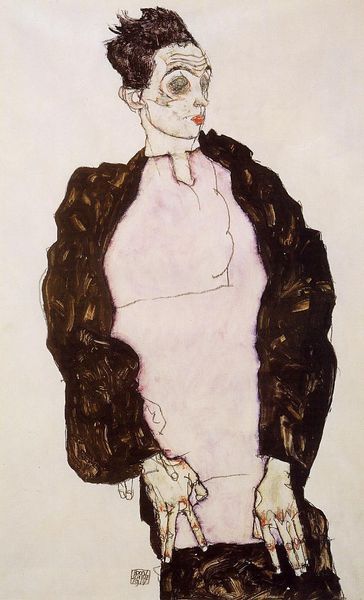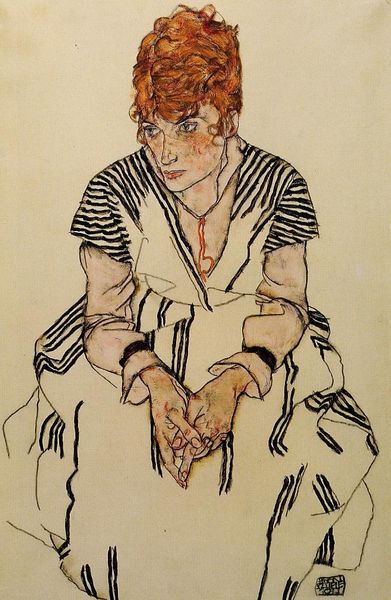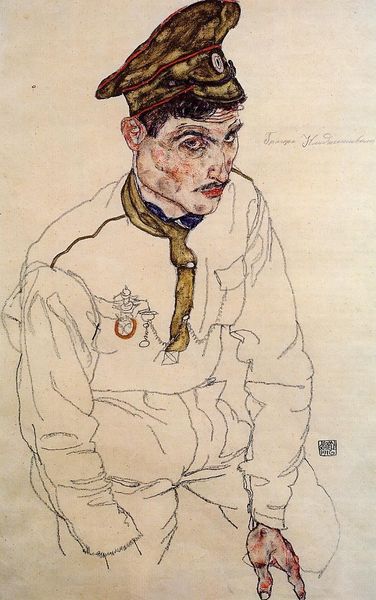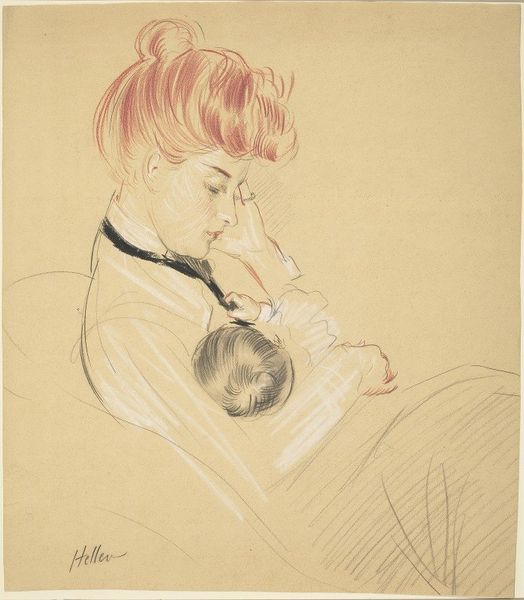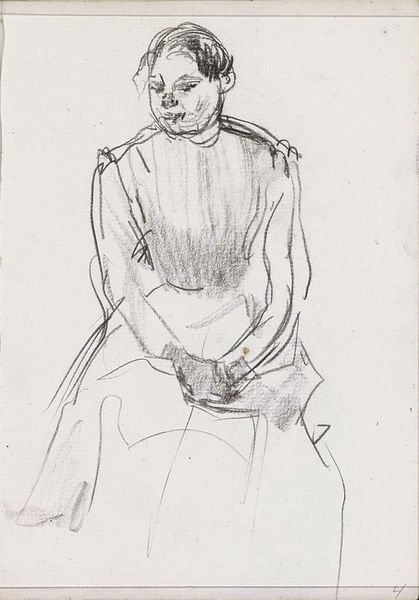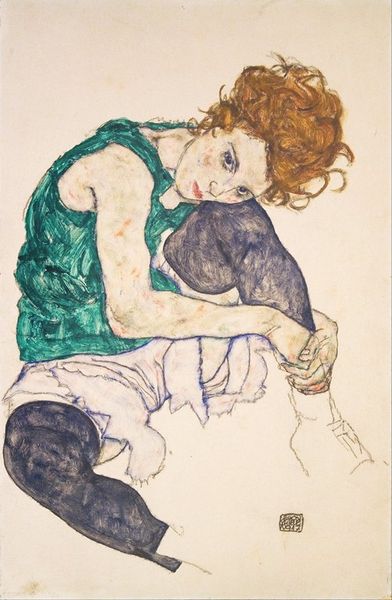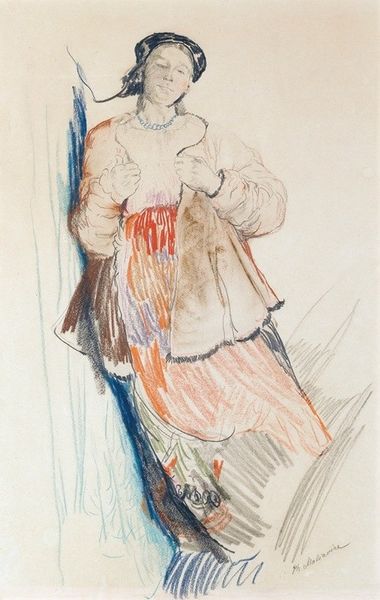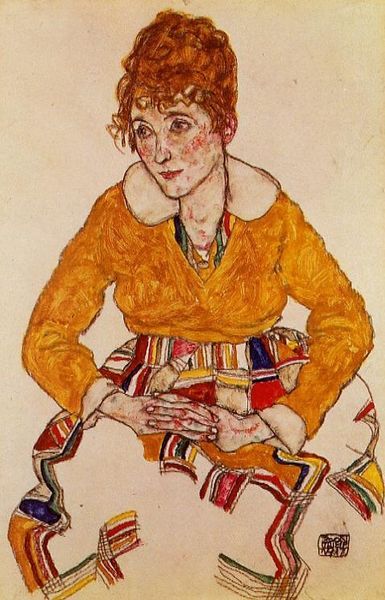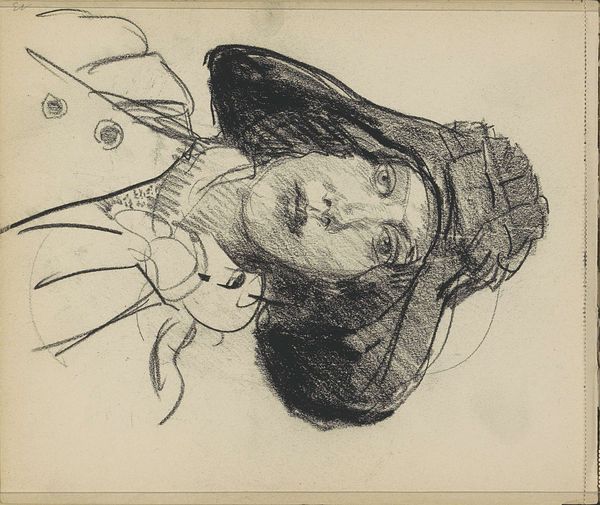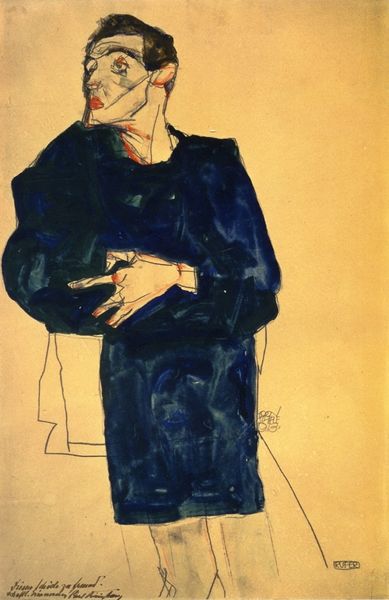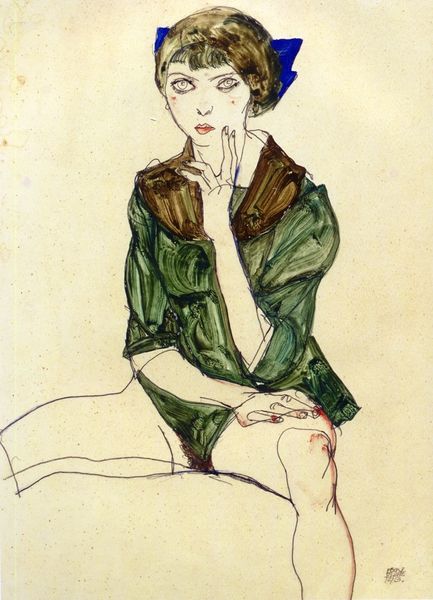
drawing, pencil
#
portrait
#
drawing
#
pencil drawing
#
pencil
#
expressionism
#
portrait drawing
Copyright: Public Domain: Artvee
Editor: So here we have Egon Schiele’s 1917 pencil drawing, "Die Frau des Künstlers, sitzend Edith Schiele," or "The Artist’s Wife, Seated Edith Schiele." It's striking how delicate yet unsettling it feels. What jumps out at you? Curator: Immediately, I see a powerful assertion of female identity, particularly when we consider the context of 1917. While ostensibly a portrait of his wife, it also challenges traditional representations of women at the time. The slight awkwardness in the pose, the direct yet vulnerable gaze, speak to a woman claiming her own space. How does this portrayal intersect with your understanding of Expressionism? Editor: That's fascinating. I hadn't considered it as actively challenging gender roles. I always saw Expressionism as more about individual emotion than societal critique. Curator: But isn't individual emotion always informed by societal pressures? Schiele’s raw depiction of Edith can be interpreted as a response to the constrained expectations placed on women. Think about the way her hands are rendered, almost nervously clasped; this visual clue speaks volumes about the anxieties of the time. Also, how does the use of line contribute to this emotional landscape? Editor: The lines are so fragile and broken, particularly in areas like her limbs which suggests vulnerability, yet, she is looking away towards something or someone to her right? Curator: Exactly! Her gaze pulls us into considering the space beyond the image itself and opens an area for discussions about what it means to view a female's experience from our 21st-century eyes. I wonder what other interpretations the portrait opens for new female perspectives? Editor: I never thought to look at it this way, that social constraint can inform subject’s expression. It's given me a new framework to use, and a deeper appreciation. Thanks! Curator: It's about understanding the interplay between personal experience and broader cultural forces. Now I see even more complexities of line, a conversation that continues beyond the frame of the picture, even a hundred years on!
Comments
No comments
Be the first to comment and join the conversation on the ultimate creative platform.

